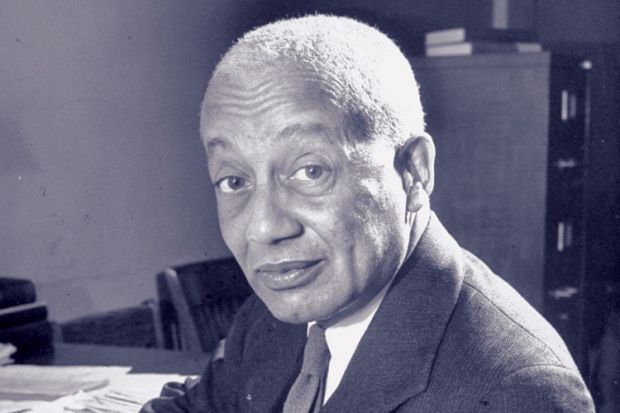Source: Getty
Renaissance man: Alain LeRoy Locke, the first African-American Rhodes Scholar
George Frederick Hall, the mixed-race son of a runaway slave from Tobago who had jumped ship to Australia, came to the University of Oxford as Queensland’s Rhodes Scholar in 1910. The locals in his Outback town clubbed together to pay his fare and provide him with a travelling rug. Although he began studying medicine, he switched to engineering and eventually worked on the Sydney Harbour Bridge.
Three years earlier, Alain LeRoy Locke was the first African-American Rhodes Scholar, although hostility from white racists in Oxford’s American Club led him to leave before completing his degree. He moved to the University of Berlin before returning to the US to become the “father” of the movement known as the Harlem Renaissance.
Pioneers such as these, completely ignored in the Brideshead Revisited image of Oxford, are at the heart of cultural heritage scholar Pamela Roberts’ new book, Black Oxford: the Untold Stories of Oxford University’s Black Scholars.
Although there have been black students at Oxford since 1873 and many have gone on to become prime ministers and presidents, or to make major contributions in the arts, education and the law, Ms Roberts said a local government officer once “informed” her that “black people only arrived in the 1960s to drive the buses and work in the factories”.
She responded by creating a black heritage walking tour of Oxford, where many young black people and their parents express “anger that no one told them this before”, and then by writing the book.
In her quest to assemble a “selection of black scholars who came to Oxford and were successful”, preferably those with “quirky stories”, Ms Roberts had to rely on her own research efforts. A visit to the Pitt Rivers Museum led to the story of the Antiguan James Arthur Harley, the first black student to take a diploma of anthropology at Oxford in 1909, and who went on to become a curate and councillor in Leicestershire. A local historian turned out to have a suitcase full of Harley’s papers under his bed.
Unsurprisingly, Ms Roberts unearthed many examples of prejudice and culture clashes. Lady Kofoworola Abeni Ademola, who in 1935 became the first African woman to gain an Oxford degree, found “the more acute form of colour prejudice” less irritating than “being regarded as a ‘curio’ or some weird specimen of nature’s product”. At one tea party, she recalled, her hostess said she was “not what she expected” and kept repeating: “‘How very interesting!’ at the end of all the remarks I made; I believe she even said ‘How very interesting!’ when I was saying ‘Goodbye’.”
In the 1930s, Kofi Abrefa Busia, a future prime minister of Ghana, decided to attend a formal college dinner in traditional Kente cloth, knowing that he was likely to be “sconced” – forced to drink a tankard of beer in one go unless he could defend himself in Latin. He prepared his speech and was indeed greeted with cries of “Sconce him!” – only for the hall master to intervene: “Oh leave him alone, he’s just homesick!”
Walking past Blackwell’s bookshop recently, Ms Roberts spotted a poster of Oxford decorated with pictures of celebrated alumni such as Philip Pullman, Oscar Wilde and C. S. Lewis under the heading “Stand on the shoulders of giants”. None was black. Her book, she said, celebrates “the black giants whose shoulders we can stand on”.
Register to continue
Why register?
- Registration is free and only takes a moment
- Once registered, you can read 3 articles a month
- Sign up for our newsletter
Subscribe
Or subscribe for unlimited access to:
- Unlimited access to news, views, insights & reviews
- Digital editions
- Digital access to THE’s university and college rankings analysis
Already registered or a current subscriber?




